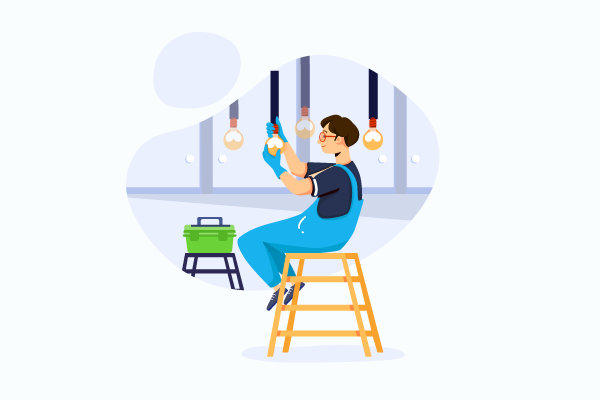Workers Comp For Installers
Securing the welfare and safety of employees across various industries, workers’ compensation is an indispensable component.
This is super crucial for installers who work in strenuous and possibly perilous environments.
Whether they are involved in construction, electrical work, plumbing, or other installation services, installers face unique risks and challenges on the job.
Understanding the importance of workers’ compensation for installers is essential for both employers and employees.
In this blog, we will explore the key aspects of workers’ compensation specific to installers, including the types of injuries they may encounter, the benefits provided by workers’ comp, and the steps to take in case of an injury.
By delving into this topic, we aim to provide valuable insights and guidance to ensure the safety and well-being of installers, while also helping employers navigate the complexities of workers’ compensation in the installation industry.
Best Practices And Policies For Workplace Injury Prevention And Installer Safety.
Comprehensive Safety Training:
Implementing a robust safety training program is essential for preventing workplace injuries.
It should cover topics such as proper equipment handling, hazard identification, safe work practices, and emergency procedures.
Ongoing training and refresher courses should be provided to ensure installers stay updated on safety protocols.
Personal Protective Equipment (PPE):
Providing appropriate personal protective equipment is crucial to protect installers from potential hazards.
This may include items such as hard hats, safety goggles, gloves, protective clothing, and fall protection gear.
Employers should ensure that PPE is accessible, regularly inspected, and properly used by installers.
Job Hazard Analysis:
Conducting a thorough job hazard analysis helps identify potential risks and develop strategies to mitigate them.
Employers should assess the work environment, equipment, and tasks performed by installers to determine the necessary safety measures and implement preventive controls.
Regular Equipment Maintenance:
Installers often work with various tools and equipment. Regular maintenance, inspection, and calibration of equipment are vital to ensure their proper functioning and minimize the risk of accidents or injuries caused by faulty equipment.
Clear Communication and Reporting Systems:
Establishing clear communication channels and reporting mechanisms enables installers to report safety concerns, incidents, and near-misses promptly.
Encouraging an open and transparent culture where employees feel comfortable reporting hazards or unsafe conditions can help prevent future accidents.
Ergonomic Considerations:
Installing work often involves repetitive tasks, heavy lifting, and awkward postures.
Employers should assess ergonomic risks and implement measures such as adjustable workstations, lifting aids, and ergonomic tools to minimize strain and musculoskeletal injuries.
Regular Safety Inspections:
Conducting routine safety inspections of the work environment helps identify potential hazards and ensure compliance with safety standards.
This proactive approach allows employers to address any issues promptly and implement corrective measures to prevent accidents.
Incident Investigation and Analysis:
In the event of an accident or injury, conducting thorough investigations is crucial to determine the root causes and implement corrective actions.
This analysis helps identify trends, areas for improvement, and additional safety measures that may be required to prevent similar incidents in the future.
Employee Involvement and Engagement:
Encouraging employee participation in safety initiatives through regular meetings, safety committees, and feedback sessions fosters a sense of ownership and responsibility for their own safety and the safety of their colleagues.
Regular Review and Improvement:
Safety practices should be regularly reviewed, evaluated, and updated to ensure they remain effective and aligned with industry standards.
This may involve consulting with safety experts, staying informed about regulatory changes, and implementing best practices from within the industry.
By implementing these best practices and policies, employers can create a safer work environment for installers and ensure that they are adequately protected. Prioritizing safety not only reduces the risk of injuries but also enhances productivity, morale, and the overall success of the installation business.
How Employers Can Stay Up To Date On Workers' Compensation Laws And Regulations Related To Installation Work
To stay up to date on workers’ compensation laws and regulations related to installation work, employers can take several steps.
First, they should regularly review and familiarize themselves with the specific workers’ compensation laws in their jurisdiction that pertain to the installation industry.
This includes understanding the coverage requirements, reporting obligations, and benefit entitlements for installers.
Additionally, employers can stay informed by actively monitoring industry publications, attending relevant seminars or workshops, and engaging with professional organizations or associations that provide updates on legislative changes.
It is also beneficial to establish a relationship with a knowledgeable workers’ compensation attorney or consultant who can provide guidance and advice on compliance with evolving laws and regulations.
By proactively seeking and staying informed about changes in workers’ compensation laws, employers can ensure they are meeting their legal obligations and providing adequate protection for their installers.
There are various resources available to both employees and employers to navigate workers’ compensation. Here are some common resources:
State Workers’ Compensation Board/Commission: Each state has a Workers’ Compensation Board or Commission that oversees workers’ compensation matters.
Their websites provide valuable information on state-specific laws, regulations, claim procedures, and forms.
Employers and employees can access these resources to understand their rights and responsibilities.
Insurance Carriers and Third-Party Administrators: Insurance carriers and third-party administrators (TPAs) that handle workers’ compensation claims often provide resources and guidance to employers and employees.
They can offer assistance with claims filing, answering questions about coverage, and explaining the claims process.
State Labor Departments: State labor departments may offer resources and guidance on workers’ compensation matters.
They can provide information on state laws, regulations, and compliance requirements.
They may also offer educational materials, training programs, and assistance with resolving disputes or filing complaints.
Employer Associations and Trade Organizations: Industry-specific employer associations and trade organizations often provide resources and support related to workers’ compensation.
They may offer access to legal guidance, training programs, seminars, and networking opportunities where employers can share best practices and stay updated on industry trends.
Legal Counsel: Both employers and employees can seek the advice of legal professionals who specialize in workers’ compensation.
Attorneys experienced in this area of law can provide guidance on compliance, dispute resolution, claims process, and any legal actions that may be necessary.
Employee Assistance Programs (EAPs): Some employers offer Employee Assistance Programs, which can provide counseling services, resources, and support for employees navigating workers’ compensation claims.
EAPs may also offer assistance with rehabilitation, return-to-work programs, and vocational training.
It’s important for employers and employees to proactively explore these resources and leverage them as needed.
Understanding rights, obligations, and available support can help facilitate a smoother workers’ compensation process and ensure that both parties are aware of the options and protections available to them.




